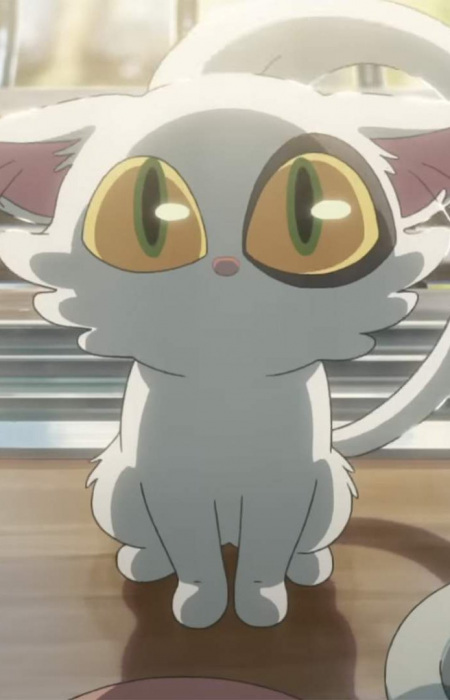
| Japanese Name | ダイジン |
|---|---|
| Romaji Name | Daijin |
| Nicknames | None |
| Series | Suzume no Tojimari |
| Age | Unknown |
| Weight | Unknown |
| Height | Unknown |
| Date of Birth | Unknown |
| Blood Type | Unknown |
Personality
Daijin, a character from the anime “Suzume no Tojimari”, has a distinct and fascinating personality. As the former Keystone of the Ever-After, Daijin plays a pivotal role in the story. After being freed by the protagonist, Suzume, he takes on the role of a guide, helping her find the next door to stop the worm’s progress.
Daijin shows a sense of wisdom and knowledge beyond his feline appearance. He is portrayed as a calm and collected character, offering guidance and support to Suzume throughout her journey. Despite his enigmatic nature, Daijin proves to be reliable and resourceful, providing valuable insight and advice to the main characters.
Background
The background of Daijin’s past is not explicitly stated in the available sources. However, it is implied that he was once an important being within the Everafter Realm, serving as a keystone. The circumstances that led to his imprisonment and subsequent liberation by Suzume remain unknown. The anime series will likely explore Daijin’s backstory and the events that led to his role in the story.
Appearance
Daijin’s physical appearance is that of a small, white cat with a distinctive dark gray spot around his left eye. He has large, yellow eyes with a green tinge near the pupils, adding to his enigmatic aura. Despite his seemingly ordinary appearance, Daijin has an air of mystery and intrigue that reflects his role as a guide and mentor in the story.
Abilities
While detailed information about Daijin’s abilities is limited, it is implied that his knowledge and insight into the Ever-after realm and its associated doors are his primary strengths. His role as guide implies a deep understanding of the mechanisms and intricacies of the world Suzume finds herself in. Daijin’s guidance and assistance are crucial in helping the main characters navigate through various challenges and obstacles.
Origin
Daijin originates from the anime series “Suzume no Tojimari”, where he plays the role of a supporting character. The sources do not provide any further information on the specific origins or inspirations behind the character’s creation. However, it can be inferred that Daijin was created to embody the enigmatic and wise mentor archetype that guides the protagonist on her journey.
Daijin – FAQ
What is “Suzume no Tojimari”?
“Suzume no Tojimari” is a Japanese folk tale that tells the story of a sparrow and a farmer. It is a popular children’s story that teaches lessons about kindness and gratitude.
Who is Daijin in “Suzume no Tojimari”?
Daijin is the main character in Suzume no Tojimari. He is a farmer who catches a sparrow and wants to eat it. However, the sparrow pleads for its life and promises to repay Daijin’s kindness in the future.
What does the name “Daijin” mean?
The name “Daijin” is a Japanese name that can be translated as “great man” or “important person”. In the context of the story, it represents the farmer’s role as an important character.
How does Daijin show kindness in the story?
Daijin shows kindness by sparing the life of the sparrow when it begs for mercy. Instead of eating the bird, he sets it free and allows it to fly away. This act of compassion sets the events of the story in motion.
What does Daijin get from the sparrow?
As a token of gratitude, the sparrow brings Daijin a seed of rice. He plants the seed, and it miraculously grows into a field of gold. This newfound wealth brings prosperity to Daijin and his family.
Does Daijin learn a lesson from the story?
Yes, Daijin learns important lessons about kindness, compassion, and the power of gratitude. By sparing the sparrow’s life and receiving the gift of the rice seed, he realizes the value of treating others with kindness and the rewards it can bring.
Are there any adaptations or variations of “Suzume no Tojimari”?
Yes, “Suzume no Tojimari” has been adapted into various forms of media, including children’s books, animated films, and stage plays. Different versions of the story may have slight variations in plot or characterization, but the core themes of kindness and gratitude remain consistent.


